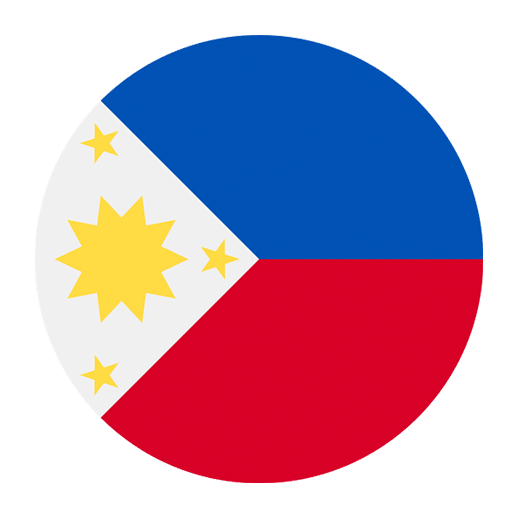The Tagalog language, a major component of the Filipino identity, is at a fascinating crossroads. As the mother tongue of the Philippines’ largest ethnic group and the basis for Filipino, the national language, Tagalog is both steeped in history and poised for future evolution. Given the rapid technological advancements, globalization, and shifts in cultural dynamics, what does the future hold for Tagalog? This article explores the potential trajectories, challenges, and opportunities that lie ahead for this vibrant language.
Historical Context and Current Status
Tagalog has a rich history, deeply intertwined with the Philippines’ colonial past and its fight for independence. Its evolution has been influenced by various languages, including Spanish, English, Chinese, and Malay. Today, Tagalog serves as the foundation for Filipino, the national language, which is spoken by millions across the archipelago.
In urban areas, particularly in Metro Manila, Tagalog is the lingua franca, enabling communication across diverse ethnic groups. In rural areas, however, many Filipinos still speak their regional languages, such as Cebuano, Ilocano, and Hiligaynon, among others. This linguistic diversity presents both challenges and opportunities for the future of Tagalog.
Impact of Globalization
Increased Exposure to English
One of the most significant factors influencing the future of Tagalog is the pervasive presence of English. As a former American colony, the Philippines has adopted English as a second official language. English is the medium of instruction in many schools and is widely used in business, government, and media. This bilingual environment has led to a unique linguistic phenomenon known as “Taglish,” a blend of Tagalog and English.
While Taglish is a testament to the dynamic nature of language, it also raises questions about the purity and survival of Tagalog. Will Tagalog continue to evolve with heavy English influence, or will efforts to preserve its integrity prevail?
Migration and Diaspora
The Filipino diaspora, estimated at around 10 million people, also plays a crucial role in the future of the Tagalog language. Overseas Filipino Workers (OFWs) bring their language and culture to different parts of the world, creating pockets of Tagalog speakers in countries like the United States, Canada, and the Middle East. These communities often create their own linguistic adaptations, blending Tagalog with the local languages.
While this diaspora helps spread Tagalog globally, it also poses the risk of language attrition, especially among second and third-generation Filipinos who may prioritize the dominant language of their new country.
Technological Advancements
Digital Media and Content Creation
The rise of digital media offers both opportunities and challenges for the Tagalog language. Social media platforms, streaming services, and online content have democratized the creation and dissemination of information. Young Filipinos are increasingly consuming and creating content in Tagalog, from YouTube vlogs to TikTok videos.
This digital shift has the potential to revitalize Tagalog, making it more accessible and appealing to younger generations. However, the dominance of English-language content on these platforms means that Tagalog content creators must compete for visibility and engagement.
Language Learning Apps and AI
Technological advancements in artificial intelligence and language learning apps also have significant implications for Tagalog. Platforms like Duolingo, Rosetta Stone, and Memrise have started offering Tagalog courses, making the language more accessible to non-native speakers. Additionally, AI-driven translation tools are becoming increasingly accurate, facilitating cross-linguistic communication.
However, the effectiveness of these tools in preserving the nuances and cultural context of Tagalog remains a topic of debate. As AI continues to evolve, it will be crucial to ensure that these technologies respect and accurately represent the linguistic and cultural intricacies of Tagalog.
Educational Policies and Initiatives
Mother Tongue-Based Multilingual Education (MTB-MLE)
The Philippine government has recognized the importance of preserving regional languages through the Mother Tongue-Based Multilingual Education (MTB-MLE) policy. Implemented in 2012, this policy mandates the use of the mother tongue as the medium of instruction from Kindergarten to Grade 3, transitioning to Filipino and English in later grades.
While this policy aims to improve learning outcomes and preserve linguistic diversity, it also underscores the need for a balanced approach to language education. Ensuring that students are proficient in both their mother tongue and Tagalog is essential for fostering national unity and cultural identity.
Promotion of Filipino Language and Culture
Various government and non-government organizations are actively promoting Filipino language and culture through initiatives like language festivals, literary competitions, and cultural workshops. These efforts aim to instill pride in the Filipino identity and encourage the use of Tagalog in various domains, from literature to performing arts.
However, the success of these initiatives depends on their reach and impact, particularly among the youth who are more exposed to global influences. Ensuring that these programs are engaging and relevant to contemporary audiences is key to their effectiveness.
Challenges and Opportunities
Balancing Modernization and Preservation
One of the primary challenges for the future of Tagalog is striking a balance between modernization and preservation. As the language continues to evolve, it is crucial to retain its cultural and historical essence. This involves documenting and preserving traditional forms of Tagalog, such as folk songs, proverbs, and literature, while also embracing contemporary expressions.
Fostering Inclusive Language Policies
Given the linguistic diversity of the Philippines, fostering inclusive language policies that respect and promote all regional languages is essential. This involves not only supporting the use of Tagalog as the national language but also ensuring that regional languages receive the recognition and resources they deserve.
Leveraging Technology for Language Preservation
Technology can be a powerful tool for preserving and promoting Tagalog. Digital archives, language learning apps, and online communities can help document and disseminate the language to a global audience. Encouraging the development of Tagalog-specific content and resources will be crucial in leveraging technology for language preservation.
Engaging the Youth
Engaging the youth in the promotion and preservation of Tagalog is vital for its future. This involves creating content and programs that resonate with young people and encouraging their active participation in cultural and linguistic initiatives. By making Tagalog relevant and appealing to the younger generation, we can ensure its continued vibrancy and evolution.
Conclusion
The future of the Tagalog language is shaped by a complex interplay of historical, social, and technological factors. While there are challenges to overcome, there are also numerous opportunities to ensure its continued relevance and vibrancy. By embracing both modernization and preservation, fostering inclusive language policies, leveraging technology, and engaging the youth, we can pave the way for a bright future for Tagalog. As we navigate this dynamic landscape, it is crucial to remember that language is not just a means of communication but a living embodiment of culture and identity. The future of Tagalog, therefore, lies in our collective efforts to cherish and promote this beautiful language for generations to come.

